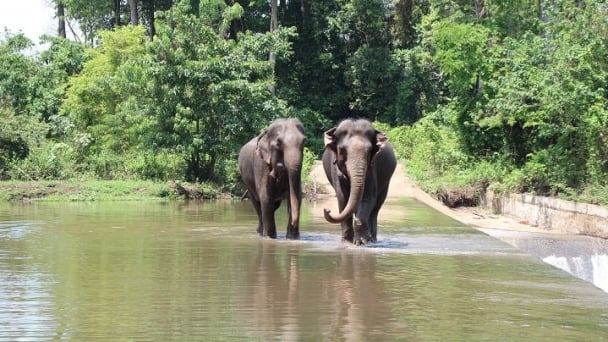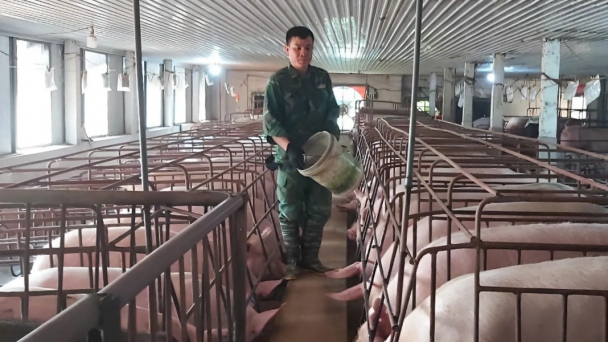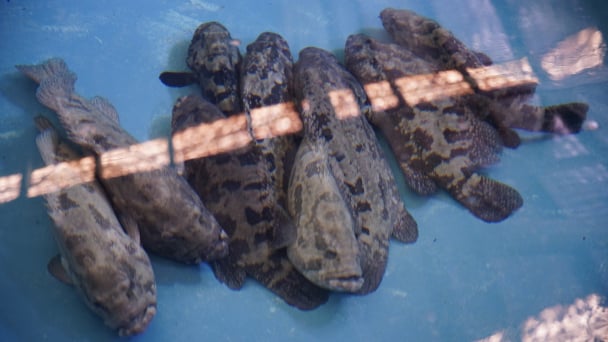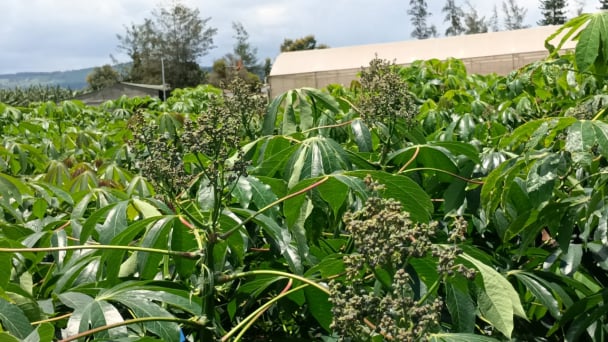May 19, 2025 | 10:33 GMT +7
May 19, 2025 | 10:33 GMT +7
Hotline: 0913.378.918
May 19, 2025 | 10:33 GMT +7
Hotline: 0913.378.918
After the precipitation pattern shifted from one of the driest Plains Octobers on record to one of the wettest Novembers in the region’s history, condition ratings improved for five consecutive weeks, alleviating dryness concerns as the crop moves into winter dormancy.
“Forty days sure made a difference,” said a major miller. “Everybody’s generally happy, especially the Oklahoma farmer, just the amount of rain that they got before and now even like the last five or six days (Nov. 28 to Dec. 3), so moisture tables are better than they were last year at this time, and wheat’s going to sleep with some good subsoil moisture.”
In its final aggregate Crop Progress report for 2024 released Nov. 25, the US Department of Agriculture rated winter wheat 8% in excellent condition, 47% good, 33% fair, 9% poor and 3% very poor as of Nov. 24. That was a sharp overall improvement from the Department’s initial rating of the crop on Oct. 28 at 5% excellent, 33% good, 39% fair, 16% poor and 7% very poor.
“The crop needed more than just one or two rain events, it needed a pattern change and we certainly got there,” said Justin Gilpin, chief executive officer of Kansas Wheat. “It was just what the doctor ordered for the wheat crop that was planted and needing the soil recharge. Even though it came a little later than ideal, it certainly put the winter wheat crop in a lot better situation now that it’s in dormancy with this cold weather.”
The USDA’s wheat condition ratings improved each week in November. The Department said winter wheat in good-to-excellent condition as of Nov. 24 was 55% in Kansas, 48% in Oklahoma, 52% in Texas, 68% in Colorado, 48% in Nebraska, 24% in South Dakota and 39% in Montana.
Though the crop is now set up well with solid pre-dormancy growth and better soil moisture deposits to draw on in the spring, the timing of the fall rains could still affect the crop, Gilpin said.
“Because the rain did come later, you might not have those anchoring roots and tillering with the wheat crop that farmers want, but certainly it’s going to help with pushing up the wheat that hadn’t emerged yet. Moisture has certainly been a blessing for the crop. It’s gone into dormancy, where it waits for soil temperatures to warm back up.”
With the crop’s moisture concern alleviated, at least for now, attention turns to the typical issues in winter wheat, namely how low freezing temperatures descend and how much snow Mother Nature delivers as a protective blanket.
“We know we’ve got a large area in Kansas, Oklahoma, Texas that has its soil moisture recharged and the plant condition in better shape than what we were,” Gilpin said. “We’ll be watching the weather, how some of the cold snaps over the next 60 to 90 days develop, and hopefully we would catch some snow cover to help protect the crop. Every year there’s some climate extremes as you go through the winter season to watch for, but the producer is feeling a lot better about the crop’s ability to weather some of those extremes because of the moisture getting the plant a little bit better established.”
With the largest hard red winter wheat production areas of the central and southern Plains in good shape, wheat watchers continued to monitor the dry northern Plains, where winter wheat grows in rotation with numerous other crops. Montana winter wheat was 39% in good condition as of Nov. 24, but no part of that crop was in excellent condition, and had not been since national condition ratings began Oct. 28, when Montana wheat was rated 17% good, 73% fair, 9% poor and 1% very poor. In South Dakota, winter wheat rated good-to-excellent on Nov. 24 had fallen to 24% from 44% a month earlier.
“There’s still some dryness and pockets of concern as you move further north up into South Dakota, and some of those areas,” Gilpin said. “But the Southern Plains certainly feels a lot better about where this crop sits not just in comparison to where we were in September and October but compared to what it’s looked like the last couple of years with the potential prospects.”
Those prospects appear much improved, but fall moisture doesn’t necessarily give much leeway on the need for spring rains.
“What we learned from the 2023 crop — the historically low production and high abandonment year due to drought — is that if you have a dry fall where the crop doesn’t get established or emerged, that’s really hard to come back from if you have a dry spring,” Gilpin said. “We look at this fall’s precipitation as having gotten us over the first obstacle, the first hurdle, and it has put us in a position that if we can get those timely rains that will be needed in the spring, the prospects and yield potential look encouraging.”
In the meantime, wheat industry watchers will be tuned in to the USDA’s January estimate of winter wheat acreage planted for harvest in 2025.
“The market’s really going to be paying attention to final planted acres numbers and the first USDA estimate using surveyed data,” Gilpin said. “The next key figure that comes from USDA that people will be trying to figure out where acreage was compared to last year. We’re still leaning toward potentially Kansas wheat acres steady if not a little bit less just because of those dry conditions and lower commodity prices; Kansas planted wheat acres might be potentially about 3% lower.”
(WG)

(VAN) 14 out of 35 domesticated elephants in Dak Lak province have had their living conditions improved, with 11 of them currently participating in the non-riding elephant tourism model.

(VAN) Muong Nhe Nature Reserve hopes that being upgraded to a national park will lay the foundation for forest protection efforts to be carried out in a systematic, modern, and sustainable manner.
/2025/05/16/3923-2-171845_52.jpg)
(VAN) Lower costs, higher yields, and improved soil quality are outstanding benefits that soybeans bring when integrated into the crop rotation system.

(VAN) The 'For a Green National Environment' programme aims to promote a green lifestyle, support businesses in implementing ESG practices, and turn Net Zero commitments into concrete actions.

(VAN) Cold-barn systems efficiently manage environmental and temperature conditions, which aids in the prevention of respiratory diseases in pigs and protects them from the vectors that transmit African swine fevers.

(VAN) To tackle challenges, the project 'Addressing key technical bottlenecks in the grouper supply chain in Vietnam' has been underway since 2024.

(VAN) The project 'Disease-Resilient and Sustainable Cassava Production Systems in the Mekong Region', funded by the Australian Center for International Agricultural Research (ACIAR), is being implemented from 2024 to 2028.